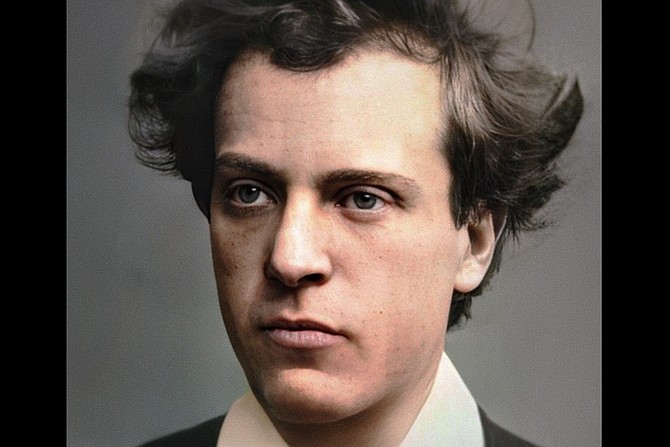 Facebook
Facebook
 X
X
 Instagram
Instagram
 TikTok
TikTok
 Youtube
Youtube

One of classical music’s greatest “what could have been” stories is that of Hans Rott, a highly talented and promising composer of the late 19th century. Although his life was tragically short, his contributions to the world of music were significant and influential.
Born on August 1, 1858, Rott showed an early aptitude for music. He began his musical education at the Vienna Conservatory at the age of 14, where he studied composition and organ with none other than Anton Bruckner. Bruckner recognized Rott's exceptional talent and became a mentor and friend to the young composer.
While at the conservatory, Rott also became friends with his roommate, Gustav Mahler. After Rott’s death, Mahler would claim that Rott was the founder of the new symphony as Mahler had grown to see it.
The work that Mahler was referencing was Rott’s Symphony No. 1 in E major, completed in 1880. The symphony is a grand and ambitious work, showcasing Rott's mastery of orchestration and his ability to create powerful and emotional musical landscapes at the tender age of 20. Despite its brilliance, the symphony was largely overlooked during Rott's lifetime and remained unpublished until the 1980s.
Besides Bruckner, Rott was greatly influenced by Richard Wagner. He attended the premiere of Wagner’s Ring Cycle at the first Bayreuth Festival in 1876. No one left that experience without a heavy Wagnerian influence.
Rott showed his symphony to Johannes Brahms, but Brahms was diametrically opposed to both Bruckner and Wagner concerning the issue of what music should be. Perhaps not surprisingly, Brahms told Rott to quit music because he had no talent whatsoever. Rott was devastated, and Brahms was confirmed as something of a dick.
Unfortunately, Rott's promising career was cut short by mental illness. While on a train trip, Rott pulled a pistol on another passenger and claimed that the naysaying Brahms had loaded the train with explosives. In addition to delusions, Rott also suffered severe depression , which ultimately led to his institutionalization in 1880. During his time in the asylum, Rott's mental health deteriorated further, and he was unable to continue composing. He died of tuberculosis at the age of 25 in 1884, leaving behind only a handful of completed works.
Despite his tragic fate, Rott's music has had a lasting impact on the world of classical music, in that he stands between Bruckner and Mahler. His symphony, which wasn’t premiered until 1989, has gained recognition as a masterpiece of the late Romantic period.
There have been several recordings of this symphony since 1989. The most recent was an effort by Deutsche Grammophon in 2022.


One of classical music’s greatest “what could have been” stories is that of Hans Rott, a highly talented and promising composer of the late 19th century. Although his life was tragically short, his contributions to the world of music were significant and influential.
Born on August 1, 1858, Rott showed an early aptitude for music. He began his musical education at the Vienna Conservatory at the age of 14, where he studied composition and organ with none other than Anton Bruckner. Bruckner recognized Rott's exceptional talent and became a mentor and friend to the young composer.
While at the conservatory, Rott also became friends with his roommate, Gustav Mahler. After Rott’s death, Mahler would claim that Rott was the founder of the new symphony as Mahler had grown to see it.
The work that Mahler was referencing was Rott’s Symphony No. 1 in E major, completed in 1880. The symphony is a grand and ambitious work, showcasing Rott's mastery of orchestration and his ability to create powerful and emotional musical landscapes at the tender age of 20. Despite its brilliance, the symphony was largely overlooked during Rott's lifetime and remained unpublished until the 1980s.
Besides Bruckner, Rott was greatly influenced by Richard Wagner. He attended the premiere of Wagner’s Ring Cycle at the first Bayreuth Festival in 1876. No one left that experience without a heavy Wagnerian influence.
Rott showed his symphony to Johannes Brahms, but Brahms was diametrically opposed to both Bruckner and Wagner concerning the issue of what music should be. Perhaps not surprisingly, Brahms told Rott to quit music because he had no talent whatsoever. Rott was devastated, and Brahms was confirmed as something of a dick.
Unfortunately, Rott's promising career was cut short by mental illness. While on a train trip, Rott pulled a pistol on another passenger and claimed that the naysaying Brahms had loaded the train with explosives. In addition to delusions, Rott also suffered severe depression , which ultimately led to his institutionalization in 1880. During his time in the asylum, Rott's mental health deteriorated further, and he was unable to continue composing. He died of tuberculosis at the age of 25 in 1884, leaving behind only a handful of completed works.
Despite his tragic fate, Rott's music has had a lasting impact on the world of classical music, in that he stands between Bruckner and Mahler. His symphony, which wasn’t premiered until 1989, has gained recognition as a masterpiece of the late Romantic period.
There have been several recordings of this symphony since 1989. The most recent was an effort by Deutsche Grammophon in 2022.
Comments